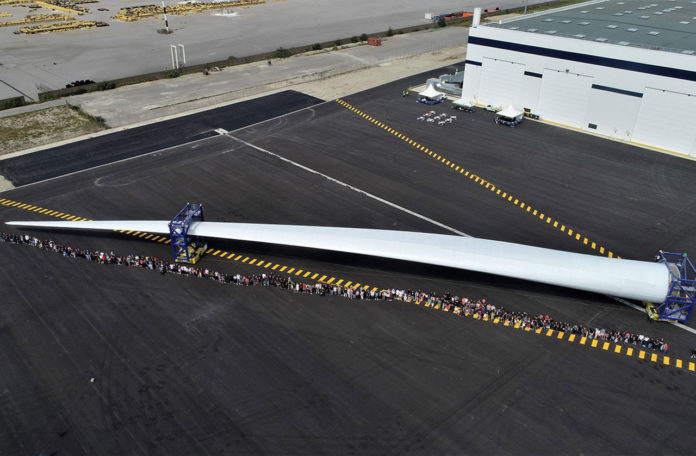Wind power is one of the most important renewable energy sources that play a critical role in the world’s transition to carbon-free energy sources. With a wind turbine life of up to 30 years, existing wind turbines can be recycled at 85 to 90%. Unlike the rest of the wind turbine, it has been difficult to find suitable methods for reusing the blades.
Now, a cross-sectoral consortium, including LM Wind Power and Engie, has announced plans to design and build the first 100% recyclable wind turbine. Driven by French research center IRT Jules Verne, the ZEBRA (Zero wastE Blade ReseArch) project aims to demonstrate on a full scale the technical, economic, and environmental relevance of thermoplastic wind turbine blades, with an eco-design approach to facilitate recycling. The project is planned to last for a period of 42 months, with a budget of €18.5 million ($21.8 million).
The strategic consortium represents the whole spectrum of the supply chain: from the development of materials, the construction of the blades, the operation of the wind turbine and its decommissioning, to finally the process of recycling the decommissioned elements.
LM Wind Power will design the product, process, and manufacture two prototype recyclable wind turbine blade using Arkema’s Elium resin to test and validate the behavior of the composite material and its feasibility for industrial production. In parallel, the ZEBRA project partners will focus on developing and optimizing the manufacturing process by using automation to reduce energy consumption and waste from production.
The team will then explore methods to recycle the materials used in the prototype blades into new products. Finally, a life cycle analysis will assess the environmental and economic viability of further utilizing the thermoplastic material in future wind turbine blades.
Céline Largeau, ZEBRA project Manager, IRT Jules Verne, stated: “Demonstrating a circular approach to wind turbine blades throughout their lifetime requires mobilizing a strategic consortium covering the whole value chain to guarantee valuable and precise industrial data and achievements. We look forward to carrying out constructive work altogether to improve wind energy performance and efficiency.”
“As a key player in the transition to affordable, renewable energy sources across the world, the wind power industry works actively to develop new materials with higher performance, longer lifespan, and recyclable properties,” said Torben K. Jacobsen, Senior Director Advanced Technology Systems, LM Wind Power.
“Using Elium resin, combined with design, manufacturing and recycling process optimization, constitutes an opportunity to reduce cost, production time, and environmental impact of wind turbine blades. We are thrilled to be a launching partner for a truly recyclable blade for future wind turbines, leading the way to a sustainable world that works for generations to come.“
